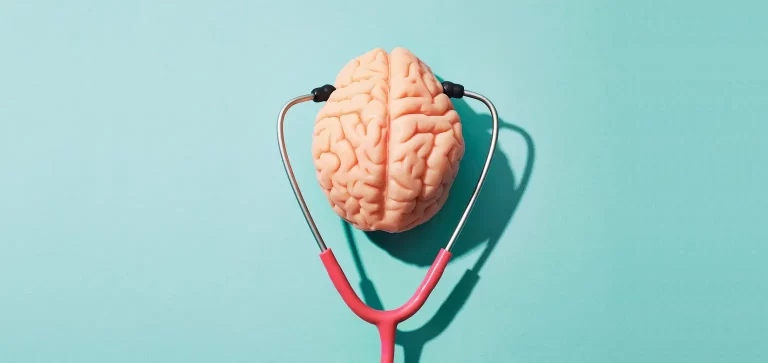Comprehensive Review of Autism Causes
Autism Spectrum Disorder (ASD) remains a complex neurodevelopmental condition, with ongoing research seeking to unravel its multifaceted causes. This review synthesizes the latest findings, drawing from authoritative sources and peer-reviewed journals to provide a detailed overview for professionals and families. The focus is on genetic, environmental, and theoretical perspectives, including insights from leading researchers like Simon Baron-Cohen.
Background and Definition
ASD is characterized by persistent deficits in social communication and interaction, alongside restricted, repetitive patterns of behavior, interests, or activities. The Diagnostic and Statistical Manual of Mental Disorders (DSM-5-TR), published by the American Psychiatric Association, outlines these criteria, emphasizing the spectrum nature of the disorder (Psychiatry.org – What Is Autism Spectrum Disorder?). Prevalence estimates, as reported by the CDC, indicate 1 in 36 children in the US are affected, highlighting the urgency of understanding its causes (Facts About Autism: Comprehensive Overview for 2025:Abacus Therapies).
Genetic Theories
Research consistently points to a strong genetic basis for autism, with heritability estimates ranging from 50% to 90%. A 2018 study in The Lancet by Lord et al. underscores this, noting that most genetic risk resides with common variation, de novo mutations, and copy-number variations (CNVs) (Autism spectrum disorder). Specific findings include:
- De novo mutations, occurring in egg or sperm cells or early embryonic development, are strongly associated with autism, as evidenced by studies like Sandin et al. (2014) (Autism spectrum disorders | Nature Reviews Disease Primers).
- CNVs, such as deletions or duplications, disrupt gene function and are linked to autism risk, with research by Szatmari et al. (2007) identifying key loci (Mapping autism risk loci using genetic linkage and chromosomal rearrangements).
- A 2015 study identified 71 risk loci, suggesting a polygenic architecture, further complicating the genetic landscape (Autism spectrum disorders | Nature Reviews Disease Primers).
Twin studies, such as Folstein and Rutter (1977), provide early evidence, showing higher concordance rates in monozygotic twins compared to dizygotic twins, reinforcing the genetic link (Examining the Causes of Autism).
Environmental Factors
Environmental influences are increasingly recognized, particularly those occurring prenatally and perinatally. The 2020 Nature Reviews Disease Primers article lists several risk factors:
- Advanced parental age, especially paternal, increases autism risk, supported by studies like Hultman et al. (2011) (Autism spectrum disorders | Nature Reviews Disease Primers).
- Prenatal exposure to valproic acid, a medication for epilepsy, is linked to autism, with Christensen et al. (2013) providing evidence (Prenatal valproate exposure and risk of autism spectrum disorders and childhood autism).
- Maternal infections, preterm birth, low birth weight, neonatal jaundice, and caesarean section delivery are also associated, though evidence is inconsistent, as noted in recent reviews (Autism spectrum disorder: definition, epidemiology, causes, and clinical evaluation).
The interplay between genetics and environment is complex, with epigenetic mechanisms potentially mediating these effects, as suggested by a 2009 PMC article (The Elusive Etiology of Autism: Nature and Nurture?).
Theoretical Perspectives: The Extreme Male Brain Theory
Proposed by Simon Baron-Cohen in 2002, the extreme male brain theory posits that autism is an exaggeration of male cognitive traits, particularly systemizing over empathizing (The extreme male brain theory of autism). This theory suggests higher prenatal testosterone exposure might contribute, with Baron-Cohen’s 2015 study testing this hypothesis (Professor Sir Simon Baron-Cohen – Autism Research Centre). However, recent research, such as a 2019 study challenging testosterone’s link to cognitive empathy, indicates mixed support (New evidence challenges ‘extreme male brain’ theory of autism). A 2021 study found individuals with ASD have slightly more male-type brains, but this is largely due to brain size differences, suggesting the theory rests on shaky ground (Testing the Extreme Male Brain Hypothesis: Is Autism Spectrum Disorder Associated with a More Male-Typical Brain?).
Immune System Dysfunction and Neurotransmitter Imbalances
Emerging research explores immune system dysfunction, with studies suggesting chronic inflammation or autoimmunity may play a role. A 2024 VUMC news article highlights serotonin’s role, noting its association with mood regulation and brain development, potentially linking to autism (Study sheds new light on autism, but there’s more work to be done). These areas, however, require further validation, as the evidence is preliminary and inconsistent.
Recent Advances and 2025 Insights
As of early 2025, research continues to evolve, with AI approaches accelerating gene identification for autism, as reported in February 2025 by ScienceDaily (Autism News — ScienceDaily). This could lead to better understanding and earlier interventions, reflecting the dynamic nature of autism research.
Table: Summary of Leading Theories and Evidence
| Theory | Key Evidence | Strength of Support | References |
|---|---|---|---|
| Genetic Factors | Heritability 50-90%, de novo mutations, CNVs, 71 risk loci | Strong, well-supported | Autism spectrum disorder |
| Environmental Factors | Advanced parental age, prenatal exposure, birth complications | Moderate, inconsistent evidence | [Autism spectrum disorders |
| Extreme Male Brain Theory | Systemizing vs. empathizing, mixed support for testosterone link | Debated, mixed evidence | The extreme male brain theory of autism |
| Immune System Dysfunction | Chronic inflammation, autoimmunity, preliminary findings | Weak, needs further research | Study sheds new light on autism, but there’s more work to be done |
| Neurotransmitter Imbalances | Serotonin levels linked to mood and brain development | Weak, exploratory | Study sheds new light on autism, but there’s more work to be done |
Conclusion
The causes of autism remain multifaceted, with genetic and environmental factors at the forefront, supported by extensive research. Theoretical models like the extreme male brain theory add depth but are controversial, while immune and neurotransmitter hypotheses are emerging areas. As research progresses, particularly with AI-driven gene identification in 2025, our understanding will likely deepen, offering hope for improved diagnostics and interventions.
Key Citations
- Autism spectrum disorder: definition, epidemiology, causes, and clinical evaluation
- Autism spectrum disorders | Nature Reviews Disease Primers comprehensive review on autism causes
- The extreme male brain theory of autism detailed psychological evidence
- Testing the Extreme Male Brain Hypothesis: Is Autism Spectrum Disorder Associated with a More Male-Typical Brain?
- Study sheds new light on autism, but there’s more work to be done serotonin and autism research
- Autism News — ScienceDaily latest research on autism causes 2025
- Psychiatry.org – What Is Autism Spectrum Disorder? official APA resource on autism
- Facts About Autism: Comprehensive Overview for 2025:Abacus Therapies autism prevalence and causes
- Autism spectrum disorders WHO fact sheet on autism
- Examining the Causes of Autism twin studies and genetic contributions
- The Elusive Etiology of Autism: Nature and Nurture? epigenetic influences on autism
- Professor Sir Simon Baron-Cohen – Autism Research Centre insights on extreme male brain theory
- New evidence challenges ‘extreme male brain’ theory of autism critical review of testosterone link








